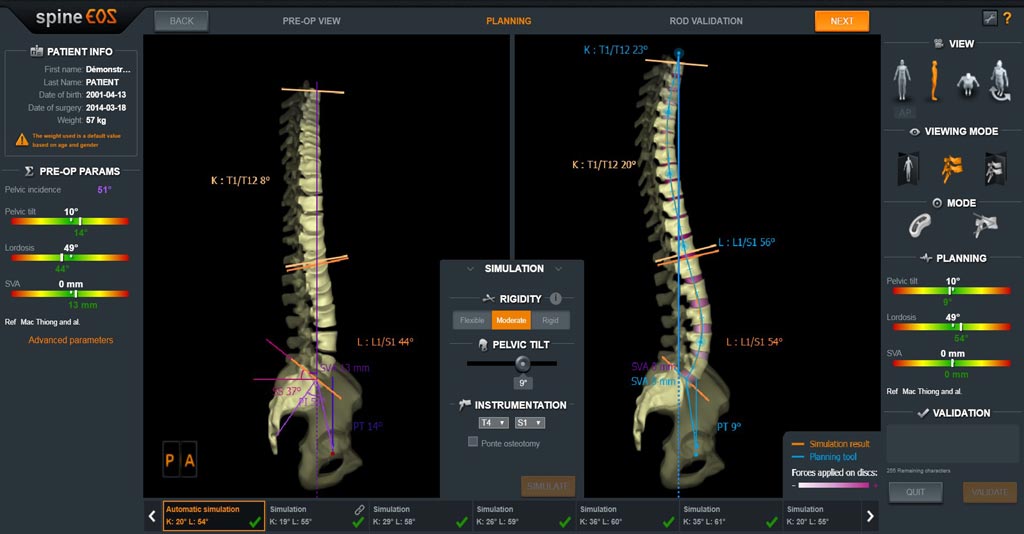New Surgery Software to Include Biomechanical Data
By MedImaging International staff writers
Posted on 19 Sep 2017
A company pioneering 2D/3D orthopedic medical imaging software has showcased a new version of its spine surgery planning software that has personalized biomechanical simulation capabilities.Posted on 19 Sep 2017
The online 3D planning software is based on stereo-radiographic 2D/3D imaging scans, and was presented at the 2017 meeting of the US-based Scoliosis Research Society (SRS).

Image: The image shows the new spineEOS spine surgery planning and simulation software that includes personalized biomechanical simulation (Photo courtesy of EOS Imaging).
The new version of the spineEOS surgery planning software was developed by EOS imaging (Paris, France), and is the first such software to include biomechanical patient data in surgery planning and simulation. The new feature is intended to help clinicians perform spinal procedures. The new software version is pending US Food and Drug Administration FDA approval but has been awarded the European CE Mark.
CEO of EOS imaging, Marie Meynadier, said, "Spine flexibility, which varies from patient to patient, is a key component of how a patient will react to spinal surgery. We are very excited to introduce, for the first time, biomechanical algorithms that take into account the specific flexibility of the patient spine, further improving the spineEOS treatment simulation and planning to accurately reflect the patient’s post-surgical reaction. We believe this will be particularly beneficial for patients with complex spinal disorders, where proper pre-operative simulation can help surgeons choose the right surgical strategy, optimize the shape and position of the implant across different spinal levels, and positively impact the final alignment and long-term outcomes."














